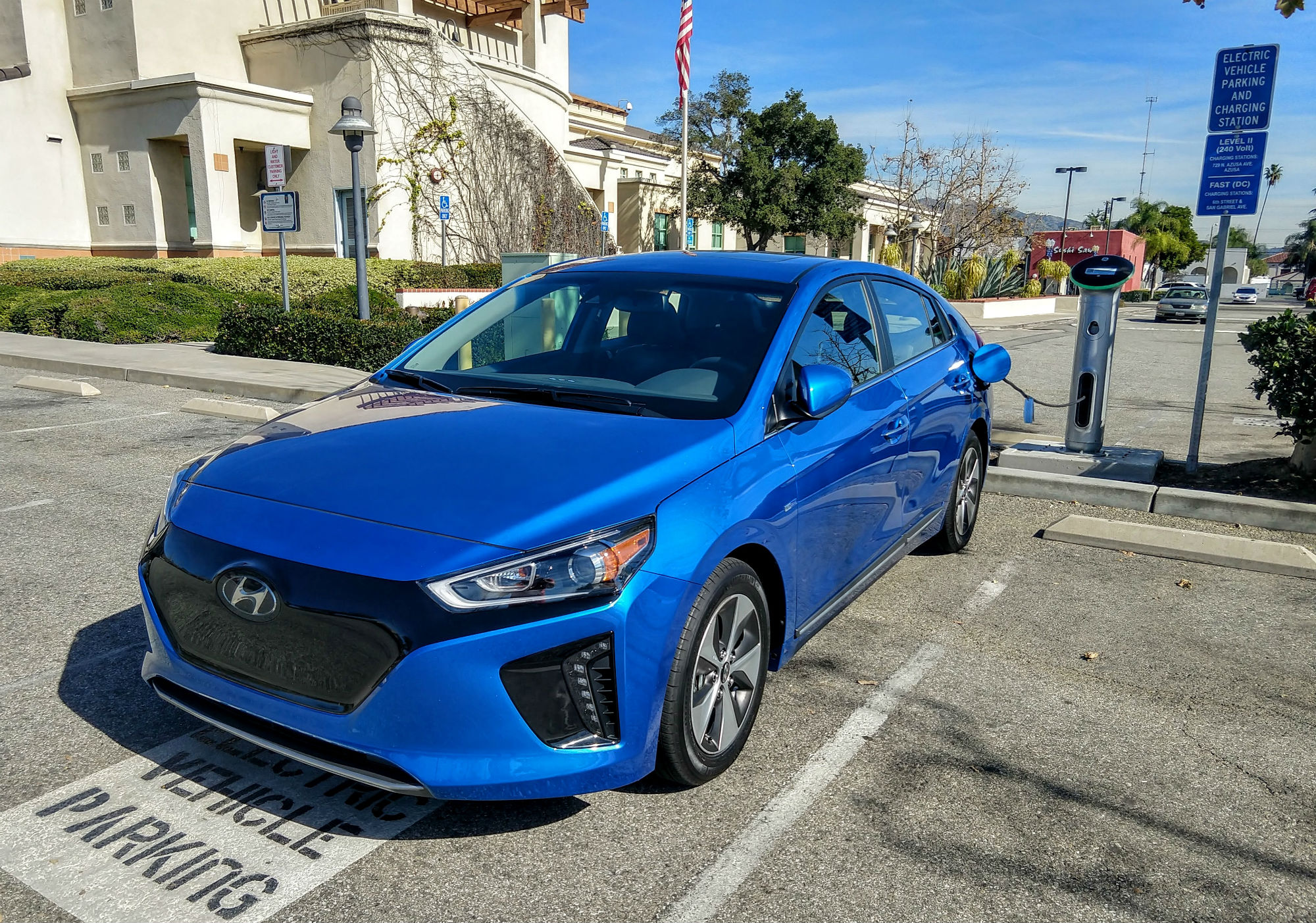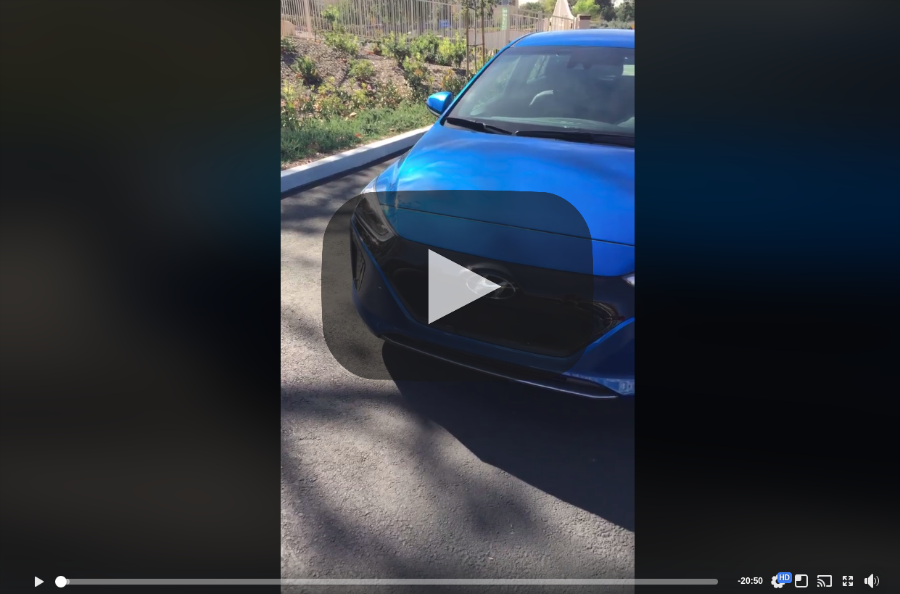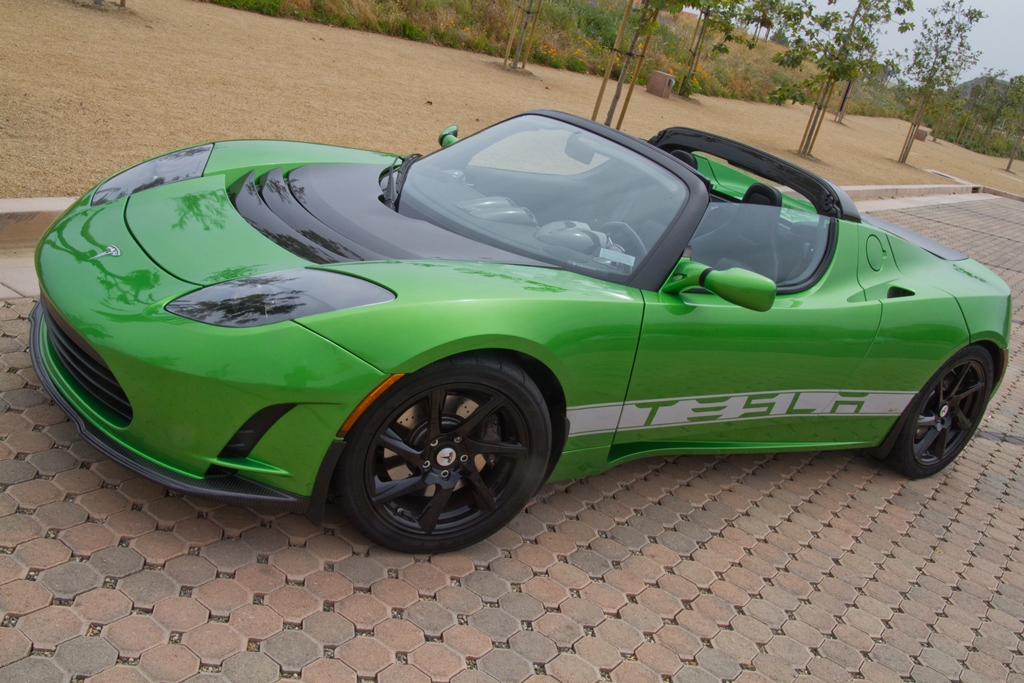You can find plenty of reviews online dealing with the technology behind the all-electric Hyundai Ioniq. Harder to find is real-life experience driving the car during a typical commute or even a longer trip that requires the use of the growing fast charger network. We set out to do just that, and give buyers considering making the jump to an EV all the details they need. I am personally considering an EV for my daily driver and put the Ioniq to the test in my 300-mile weekly commute, followed by a weekend trip of 130-miles in each direction.
With an EPA certified range of 125 miles, the Hyundai Ioniq Electric is the closest EV to cars like the Chevy Bolt or Tesla Model 3, with over 200 miles of range. However, the 2018 Nissan Leaf is coming soon with a 150-mile range and the Ioniq will fight to stay relevant. With a 28kWH battery pack, the Ioniq Electric takes over 30 hours on a household 110-volt plug, just under 5 hours on a level 2 (220V) charger, and only 30 minutes at a DC fast charger.
At night, we would charge with only a slow-charge 110V system and gain about 40 miles of range in the Ioniq. This was no problem when driving only 22 miles to the train for a couple days, but would be an issue when driving the full 40 miles into office towards the end of the week. Thankfully, a level 2 charger was available at the office and could keep the car at 100% before heading home. Throughout the week the Ioniq drove very similarly to the standard Ioniq Hybrid that we recently tested. But the all-electric had the extra benefit of not having to dance between gas and EV modes and is a much more pleasing experience to drive in traffic. Due to slow speeds in all of the wonderful LA traffic, we were also able to see closer to 140 miles of range. Watch the video below for some general driving impressions of the Hyundai Ioniq Electric on my daily commute:
The Ioniq Electric may be great for the daily drive, but we also wanted to find out how it was on a weekend trip. We set a course for Bakersfield, CA about 130 miles away. As an added challenge, the drive would take us over the Tejon Pass with an incline of 2,613 ft. in less than 12 miles. We looked at our typical route and found an EVgo fast charger at the Bridgeport Marketplace in Valencia, CA. It was an easy 52 miles to the charger and we only used about 36% of the charge. Upon arrival, the app showed that only the charger that was currently being used by a Nissan Volt was working. However, it took only a 3-minute call to EVgo support in order to get the other CCS (Combined Charging System) charger turned on and charging our Ioniq. After only 15 minutes and around $7.75 we were topped off and were ready to head over the hill.
The Hyundai Ioniq Electric had plenty of torque to make it over the grade at highway speeds, but watching the expected range drop around 6-10 miles every mile is a little disheartening. Thankfully, the Grapevine portion of the trip is a 5% downward grade that allows you to use the level-2 regenerative braking and gain back some of the spent power. We ended up arriving at our destination, 82 miles from the charger, with about 33 miles of range left, using about 75% of the charge from our “fill-up.” For those keeping score at home, that means the Ioniq averaged about 5 miles per kWh (140 miles total range) on the mostly-level highway leading to the charger and then dropped to 4.1 miles per kWh (115 miles total range) over the Tejon Pass. Therefore, owners can expect to see closer to 140 or even 150 miles range in heavy commuter traffic and somewhere close to 115 – 125 miles of range at highway speeds, depending on the terrain.
For those of us in California, the folks at Hyundai have tried to make ownership of an Ioniq Electric even easier. With the new Ioniq Unlimited+ subscription model you can lease a new Ioniq for a set fee starting at $275/month. You must put $2,500 down but the money is returned to you in a rebate from the State of California within a few months. Hyundai will also pay you for the cost of electricity based on your monthly mileage to help decrease the cost. With a calculator on the Unlimited + website, I was able to find that my average commute of 50 miles per day would subtract about $70 per month from that $275. The mileage for the lease is unlimited, but Hyundai caps the electricity discount after 50,000 miles. Not a bad deal for a new car and things like windshield wiper blades, headlight bulbs, and any maintenance (aside from tires) is covered. Unlimited+ plan pricing for our Limited trim test car with leather seats is slightly more at only $305/month, which is reasonable considering the $36k price. Overall, the Ioniq is worth a look but may be a harder sell once more vehicles hit the market with over 200 miles of range.







Thank you so much for the detailed mileage documentation. No one else has done a review like this, but more media outlets need to test vehicles just like you have tested the all-electric Hyundai Ioniq.